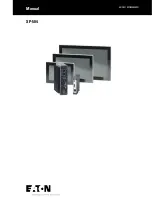
Installation and Operational Instructions for
EAS
®
-Compact
®
overload clutch Type 49_._ _4._
Sizes 01 to 3
(B.4.14.1.EN)
13/11/2017 GC/NU/GH/SU
Chr. Mayr GmbH + Co. KG
Eichenstraße 1, D-87665 Mauerstetten, Germany
Tel.: +49 8341 804-0, Fax: +49 8341 804-421
Page 9 of 19
Design
The EAS
®
-Compact
®
overload clutch is designed as a
mechanically disengaging overload clutch according to the ball
detent principle.
Scope of Delivery / State of Delivery
The clutch is manufacturer-assembled ready for installation.
The torque is set manufacturer-side according to the
customer's request (please compare the torque stipulated in
the order with the torque imprinted/engraved in the
identification).
Unless the customer requests a particular torque setting
when ordering, the clutch will be pre-set to approx. 70 % of
the maximum torque.
Please check the scope of delivery according to the Parts List as
well as the state of delivery immediately after receiving the
goods.
mayr
®
will take no responsibility for belated complaints.
Please report transport damage immediately to the deliverer.
Please report incomplete delivery and obvious defects
immediately to the manufacturer.
Function
The clutch protects the drive line from excessively high,
unpermitted torque impacts which can occur due to unintentional
blockages.
After overload has taken place, the transmitting mechanism is
completely disconnected. Only the bearing friction continues to
have an effect.
This means that no re-engagement impacts or metallic sliding
movements occur on the clutch torque transmission geometries
when using this clutch variant.
In order to make the clutch ready for operation again after an
overload occurrence, the clutch must be re-engaged.
When in operation, the set torque is transmitted backlash-free
onto the output from the motor shaft via the EAS
®
-Compact
®
overload clutch (pressure flange (2)). If the set limit torque is
exceeded (overload), the clutch disengages and remains
disengaged.
The input and the output are separated residual torque-free.
A limit switch (not included in delivery) can send a signal to
switch off the drive.
After-acting masses can run free.
CAUTION
After overload occurrence, the clutch has no
load-holding function.
Re-engagement
Re-engagement must only take place when the
device is not running or at low differential
speed (< 10 rpm).
EAS
®
-Compact
®
overload clutch re-engagement is carried out by
applying axial pressure onto the thrust washer (3).
For this, different procedures are possible:
Manually, using a plastic hammer or installation levers (Fig.
2) supported on the cup springs (9), e. g. two screwdrivers
placed opposite each other.
By using an engagement mechanism.
The engagement procedure can also be automated using
pneumatic or hydraulic cylinders.
On both variants, it may be necessary to turn between the clutch
input and output sides slightly.
The level of engagement force required is dependent on the set
limit torque for overload, and can be roughly calculated using the
following formula:
F
E
= 2.5 x M
G
[N]
F
E
= Engagement force of the clutch [N].
M
G
= Set limit torque for overload [Nm].
Fig. 2
4
9
3
Re-engagement direction





































